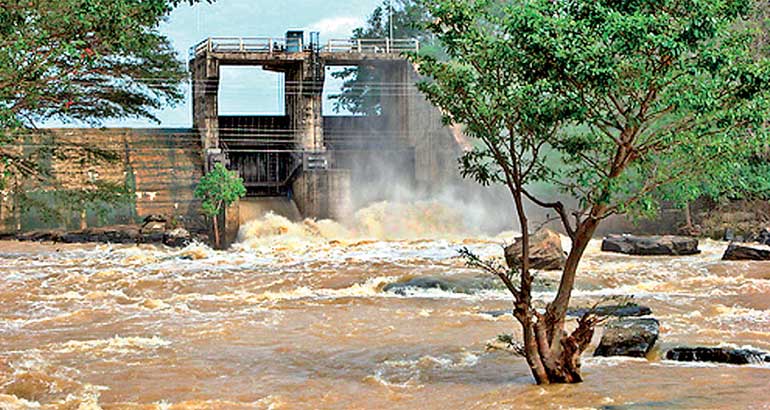Friday Jan 09, 2026
Friday Jan 09, 2026
Tuesday, 1 March 2016 00:01 - - {{hitsCtrl.values.hits}}
By Udaya R. Senevirathne
President Maithripala Sirisena announced an era of ‘blue-green development’ on 6 January to harness the best of the country’s natural resource base towards sustainable development while ensuring that the development is sustainable and resilient.
The ‘blue’ signifies the enhanced innovative approaches for sustainable growth in oceanic economy comprised of coastal and marine resources. The ‘green’ signifies a green economy which would ensure agricultural and industrial production in the country are eco-friendly with maximum use of green or low-carbon approaches in sectors such as energy, transport, construction and urban and rural development.

The Ministry of Mahaweli Development and Environment in collaboration with UNDP has developed a five-year pilot project, jointly funded by the Global Environmental Facility and the Government of Sri Lanka, to improve the country capacity to manage environmentally-sensitive areas
Blessed with a wealth of ‘blue’ and ‘green’ resources
Sri Lanka is blessed with a wealth of ‘blue’ and ‘green’ resources that are rich in biological diversity within a land area of 6,561,000 hectares and marine area of 51,700,000 hectares. Due to this significant biological wealth, the country has been identified as one of the high priority conservation areas in the world and has in fact been listed among 34 global ‘biodiversity hotspots’ and as one of the world’s 356 endemic bird areas. This aspect is complemented by the cultural and heritage resources of the country.
A country’s diverse ecosystems have a significant contribution on society’s health, livelihoods and long-term sustainable development. It also provides critical environmental services such as water, energy, air plus nutrient recycling among others and protection from natural disasters such as droughts, floods and landslides.
However, development pressures can affect this rich biodiversity and ecosystems services beyond recovery, impacting the potential benefits and economic gains unless the sensitive nature of the ecosystems were taken into consideration in the development processes. At the same time the country’s position as a global biodiversity hotspot and an ecotourism destination is also at stake.
"Sri Lanka is blessed with a wealth of ‘blue’ and ‘green’ resources that are rich in biological diversity within a land area of 6,561,000 hectares and marine area of 51,700,000 hectares. Due to this significant biological wealth, the country has been identified as one of the high priority conservation areas in the world and has in fact been listed among 34 global ‘biodiversity hotspots’ and as one of the world’s 356 endemic bird areas. This aspect is complemented by the cultural and heritage resources of the country"
Mainstreaming ecosystem management into development
Commendable contribution had been already made by State agencies to protect the natural and heritage resources within declared wildlife, forest and heritage areas. Nevertheless, there are significantly important and “Environmentally Sensitive Areas (ESAs)” outside the declared areas that also need attention to meet the objectives of the blue-green era.
In this context, the Ministry of Mahaweli Development and Environment in collaboration with the United Nations Development Programme (UNDP) developed a five-year pilot project, jointly funded by the Global Environmental Facility and the Government of Sri Lanka to improve the country capacity to manage environmentally-sensitive areas.
Launched on 28 January, the project will be initially piloted in Kala Oya basin in two selected regions; Kala Wewa region in the North Central Province covering Kakirawa, Ipalogama, Palagala, Galnawa Divisional Secretariat Divisions and Wilpattu region in the North Western Province within Wanathavilluwa and Karuwalagaswewa Divisional Secretariat Divisions.
Using the experience gained in the Kala Oya basin along with traditional and global knowledge, the project is designed to improve the governance framework on ESA management at the national level, including enforcement systems, institutional and legal frameworks and guidelines.
During the five years, the project will provide a capacity building environment for Government, Non-Government and private sector and empower communities to be part of the ESA management while benefiting from the sustainable socio-economic development associated with ESAs and Protected Areas.
This country level action of mainstreaming ecosystem management into development will contribute towards global environmental benefits, thereby connecting the blue-green era of Sri Lanka to global sustainability and resilience efforts.
(The writer is Secretary, Ministry of Mahaweli Development and Environment.)